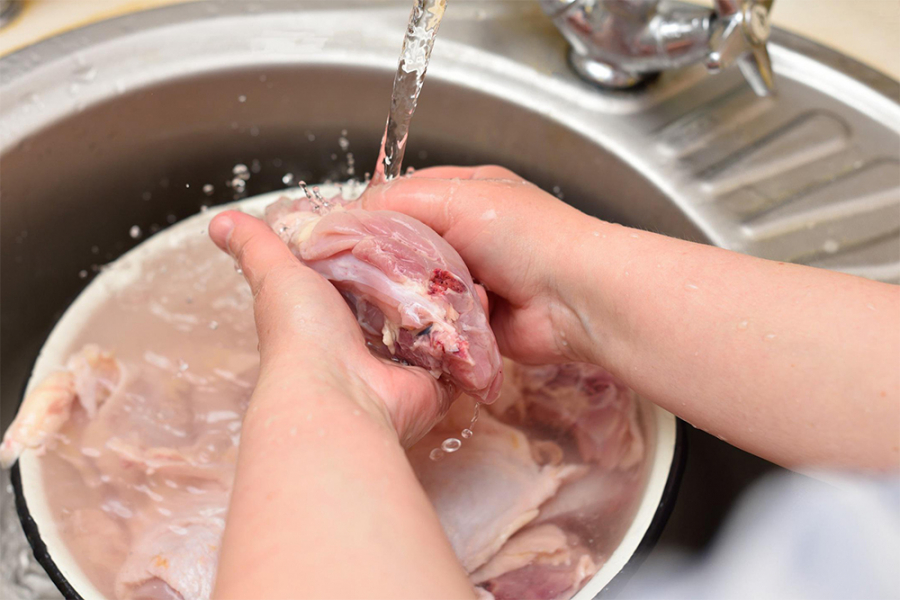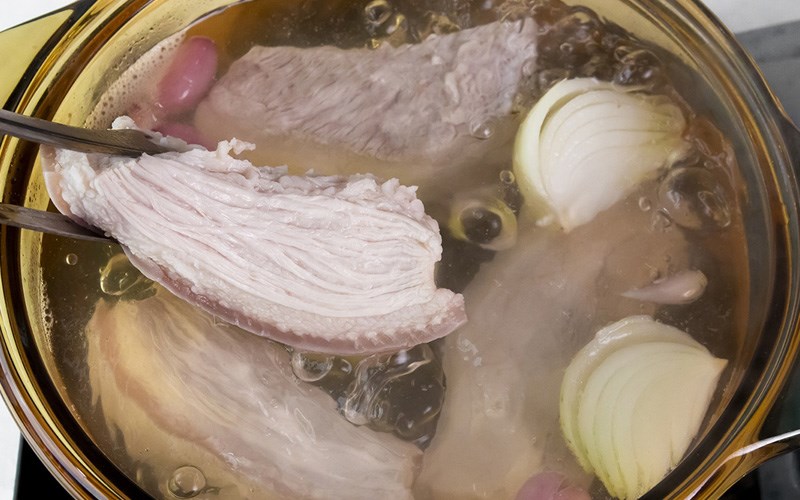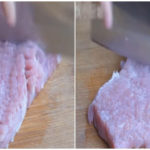Boiled meat is a familiar dish often seen in Vietnamese families. This dish has less fat so it is safer for health compared to fried foods. However, if you boil the meat incorrectly, it can become dry and have an unpleasant smell. Only by following the boiling method below will you have a delicious dish.
How to boil meat to make it delicious
Firstly, to have a delicious boiled meat, you need to choose the best quality meat. When you go to the market, you should choose pieces of meat that are fresh and odorless. Check the elasticity of the meat, if it is still good then it is freshly slaughtered. After you have selected the good meat, it’s time to prepare before boiling.
You need to prepare some ingredients to make boiled meat: Vinegar or lime, 1 small ginger, 1 dried onion, soft thread or soft netting.

Use soft thread or netting to tie the meat tightly, this will help the meat stay round when sliced. Tie the meat tightly along the length of the meat, when it is boiled, it will be sliced horizontally. The tighter you tie, the better the meat will be shaped. If you use thread, it is recommended to choose white thread, without color. Tying the pork leg firmly and then boiling will result in beautifully sliced meat. For pork belly, you can put it directly into the pot to boil without tying. If you don’t have thread or don’t prefer to use it, you can completely skip this step and put the meat directly into the pot to boil.
To make the meat delicious and odorless, you should boil it twice. In the first round, put the meat in the pot, add enough water and boil for 2-3 minutes, then add a few drops of vinegar (or lime juice) to remove the odor, making the meat whiter.
Then, pour out that water, wash the meat with warm water and boil it for the second time.
Prepare a pot of water, bring it to a boil, then add the meat, a few grains of salt, a few thin slices of ginger, and a peeled dried onion.

Salt helps the water boil evenly, ginger removes the odor, and the dried onion will enhance the delicious flavor of the boiled meat.
Boil the meat over medium heat until cooked. To check if the meat is cooked, you can use a fork to pierce the meat. If the meat still releases pink liquid, continue boiling for about 5 minutes. If the meat is cooked, the fork can easily pass through it and there will be no pink liquid flowing out.
After the meat is cooked, remove it from the pot and immediately soak it in a bowl of cold water (you can add some ice). Cold water will make the meat shrink and keep its shape. In addition, it helps prevent the meat from drying out and preserves its color.
After the meat has cooled down, you can slice it and serve.

However, if you want the sliced meat to be more evenly beautiful, you should leave it in the refrigerator for a few hours. Let the meat cool completely, wrap it tightly with plastic wrap and put it in the refrigerator for a few hours. The meat will become firm and much easier to slice.
Revealing the Secrets of Delicious Cooking by a Professional Chef
Are you looking to become the master chef of your home kitchen? Ði?n máy XANH is here to help with their tips on how to serve up restaurant-level dishes, from proper cooking methods for meat and grilling, to baking delicious cakes. So pick up your apron and get ready to show off your culinary prowess!
Unravelling the Popularity of Sugarcane Chicken During Tet
As Tet approaches, the demand for corn-fed chicken is soaring – and for good reason. Its exquisite flavor and succulent texture have won over food enthusiasts everywhere. With prices escalating during this special holiday in Vietnam, let’s dive into what makes this type of chicken so extraordinary and why it’s an increasingly popular dish.



































